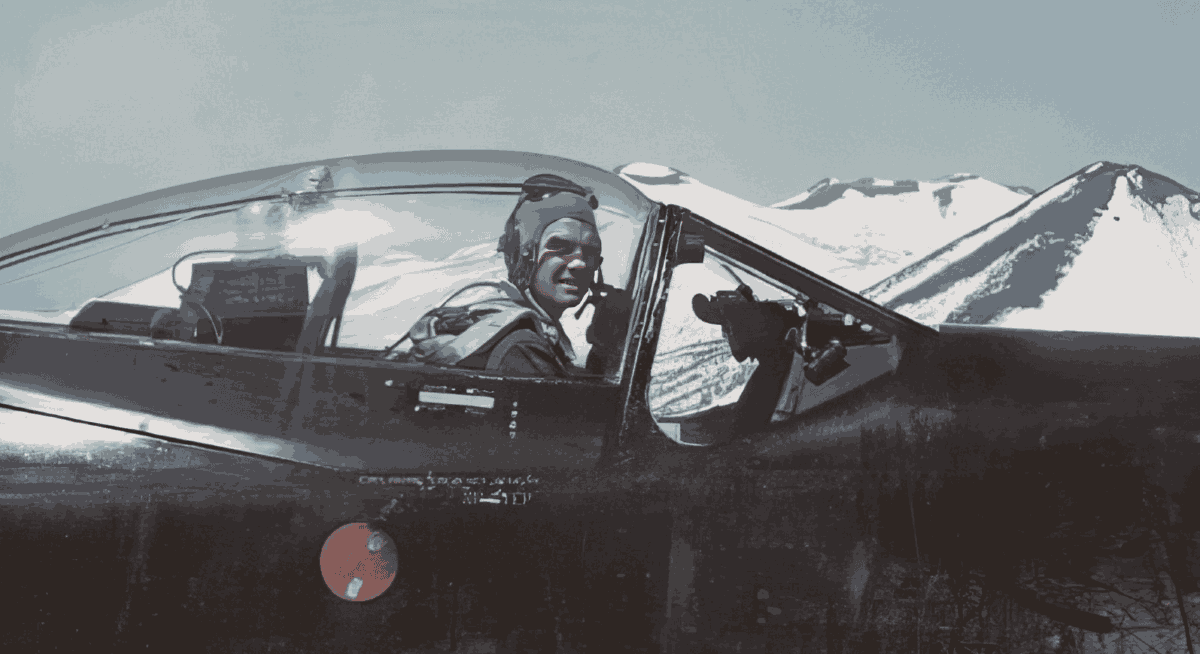
Charles Moran II came from humble beginnings in Horse Cave, Kentucky. Born in 1924, he was raised primarily by his grandfather and developed a passion for two things; aviation and basketball. In 1942, He played for the venerable Ed  Diddle at Western State Teachers College (now WKU) with teammates John Oldham and Dero Downing.
Diddle at Western State Teachers College (now WKU) with teammates John Oldham and Dero Downing.
Soon after however, he answered the country’s call, and enlisted in the US Army Air Forces in 1943, and was commissioned a Flight Officer that year. Moran flew B-17 bombers, and remained stateside at Ellington Field, Houston, where he met his wife.
He was sent to Biloxi, Mississippi, to qualify in the North American B-25 Mitchell twin-engine bomber where he was at war’s end.
Moran and his family were transferred to Itazuke, Japan, in 1948, where he learned the art of night fighting in the P-61 Black Widow, and then transitioned to the North American F-82 “Twin Mustang” all weather interceptor. This aircraft used two P-51 fuselages connected together with one of the largest and most powerful radar units in the USAF inventory at the time slung under the center wing. Six .50 cal machine guns provided the bite of this versatile machine.
 The Korean War started on June 25, 1950, and the Japan-based F-82s of the 68th All-Weather Fighter Interceptor Squadron were the closest Air Force assets to the invasion. On June 27, Moran and his squadron were called upon to provide a protective screen for civilians evacuating Kimpo Airbase near Seoul. While providing cover, a group of North Korean fighters attacked the twin Mustangs. Moran was hit, but maneuvered his fighter to destroy a Yak 9, while simultaneously Flight Leader Hudson shot down a Yak 11. This was the first air combat of the war, with Hudson subsequently credited with the first air-to-air victory. Another F-82 pilot, Lt. Keith Bobo, was an eyewitness to both actions, however, and stated that Moran’s victory had been the first. Moran received the Air Medal for his actions that day.
The Korean War started on June 25, 1950, and the Japan-based F-82s of the 68th All-Weather Fighter Interceptor Squadron were the closest Air Force assets to the invasion. On June 27, Moran and his squadron were called upon to provide a protective screen for civilians evacuating Kimpo Airbase near Seoul. While providing cover, a group of North Korean fighters attacked the twin Mustangs. Moran was hit, but maneuvered his fighter to destroy a Yak 9, while simultaneously Flight Leader Hudson shot down a Yak 11. This was the first air combat of the war, with Hudson subsequently credited with the first air-to-air victory. Another F-82 pilot, Lt. Keith Bobo, was an eyewitness to both actions, however, and stated that Moran’s victory had been the first. Moran received the Air Medal for his actions that day.
Just 40 days later, on August 7, Moran and his radar observer took off on a night intruder mission over a mountainous region near Sunchon, North Korea, and was never heard from again. The wreckage of his F-82G was found 18 months later after friendly forces entered the area. Villagers had buried the bodies and they were recovered. Lt Charles B. Moran II’s body was returned to Horse Cave, Kentucky, on May 29, 1952, and was laid to rest in the family plot.



